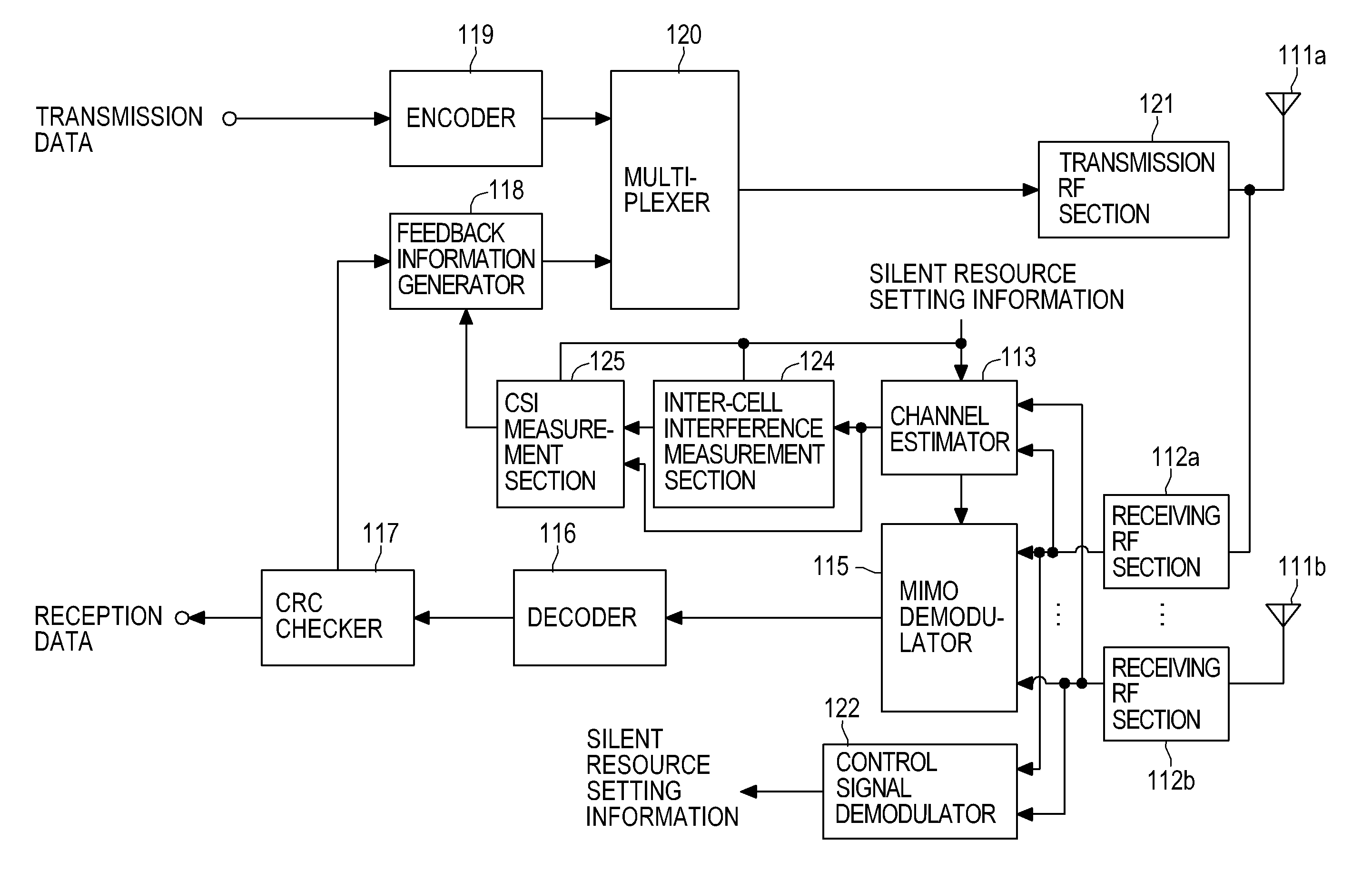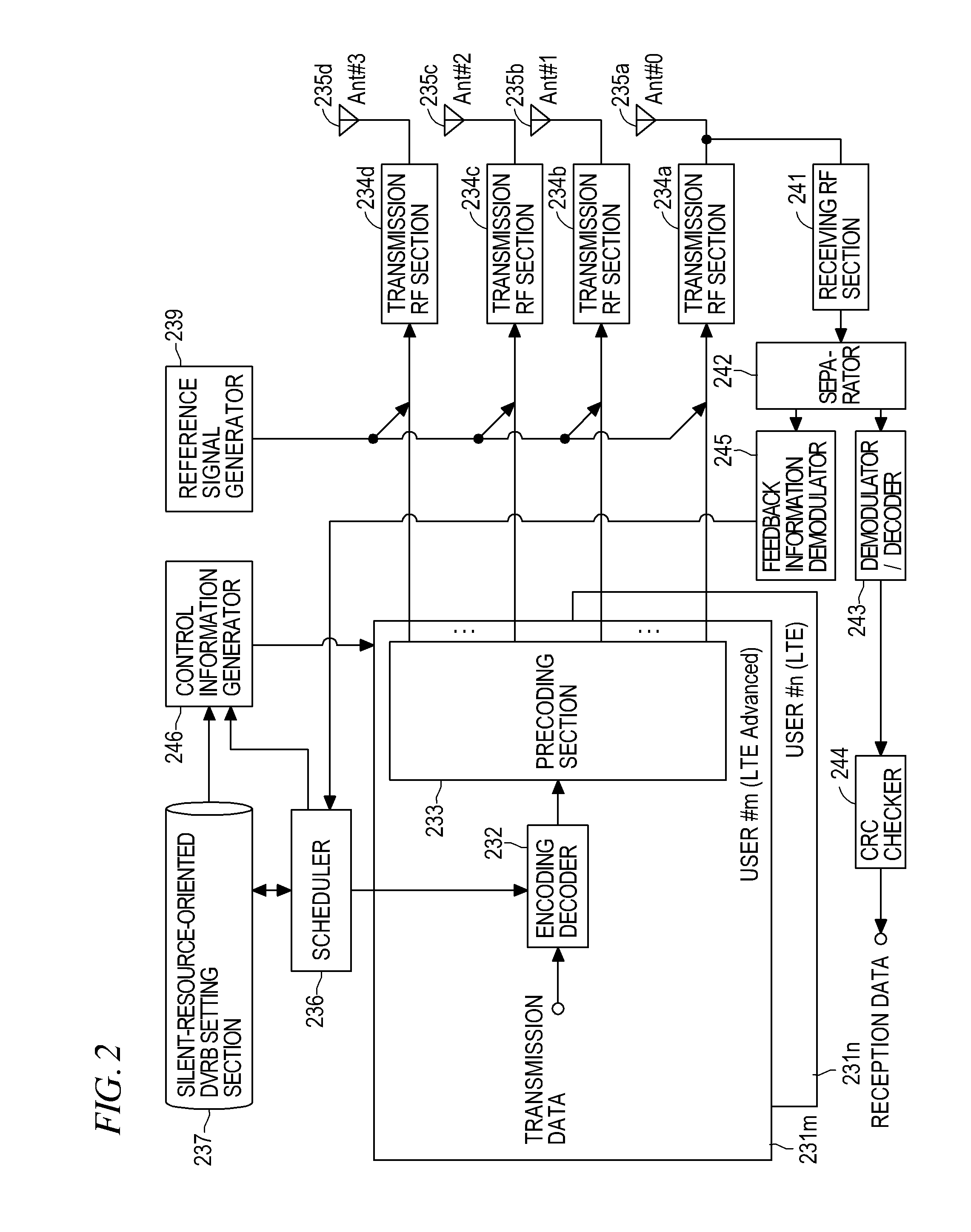Wireless reception device, wireless transmission device, and wireless communication method
- Summary
- Abstract
- Description
- Claims
- Application Information
AI Technical Summary
Benefits of technology
Problems solved by technology
Method used
Image
Examples
first embodiment
[0031]As described in connection with the background art, RB / Sub-frame that is a resource unit made up of an RB defined in a frequency direction and a Sub-frame defined in a time direction is used in LTE as a plurality of resources defined within a frequency-time domain. In this LTE frame structure, adaptive modulation and frequency scheduling are carried out while the RB / Sub-frame is taken as the minimum unit. Distributed resources are employed in the present embodiment. Specifically, one physical RB / Sub-frame is divided into a first half slot and a last half slot in the time direction. Resources of one logical RB / Sub-frame unit are caused to be hopped between the first half slot and the last half slot along the frequency direction, thereby discretely locating the resources into two different physical RB / Sub-frames at a predetermined frequency interval; namely, distributing the resources. In LTE, distributed resources, such as those mentioned above, are called distributed resources...
second embodiment
[0063]In a second embodiment, there is shown an example modification of the silent resource allocation method described in the first embodiment. FIG. 5 is a diagram showing a configuration allocation of silent resources of the second embodiment. FIG. 6 is a diagram for explaining example allocation of DVRB resources.
[0064]The second embodiment is an example in which silent resources are allocated by repeated allocation of a DVRB resource at the system bandwidth in the same way as described in connection with Non-Patent Literature A. Specifically, the present embodiment is a resource allocation configuration in which the silent resource allocation of the first embodiment shown in FIG. 3 is repeated at the system bandwidth. FIG. 6 shows example allocation of the DVRB resource described in connection with Non-Patent Literature A. In order to accomplish an interpolation / averaging effect, the silent resource should preferably be allocated while distributed at an appropriate interval in s...
third embodiment
[0067]A third embodiment shows still another example of the silent resource allocation method described in connection with the first embodiment. FIG. 7 is a diagram showing a configuration allocation of silent resources of the third embodiment. The third embodiment is directed toward an example allocation of silent resources achieved, as in the case of the first and second embodiments, on the assumption that a silent resource is allocated every “k” sub-frames (e.g., every two alternate sub-frames) and that silent resources are allocated within a range from N˜DLVRB≦JDLVRB. A specific example shown in FIG. 7 shows an allocation of silent resources achieved at k=2 (transmission performed at every two sub-frames) and J=N˜DLVRB.
[0068]In this case, a “silent resource allocation DVRB ID” as well as a “silent resource allocation cycle k” and a “shift amount J” are reported from the transmission device to the reception device as a silent resource allocation notice based on the control inform...
PUM
 Login to View More
Login to View More Abstract
Description
Claims
Application Information
 Login to View More
Login to View More - R&D
- Intellectual Property
- Life Sciences
- Materials
- Tech Scout
- Unparalleled Data Quality
- Higher Quality Content
- 60% Fewer Hallucinations
Browse by: Latest US Patents, China's latest patents, Technical Efficacy Thesaurus, Application Domain, Technology Topic, Popular Technical Reports.
© 2025 PatSnap. All rights reserved.Legal|Privacy policy|Modern Slavery Act Transparency Statement|Sitemap|About US| Contact US: help@patsnap.com



